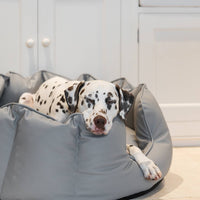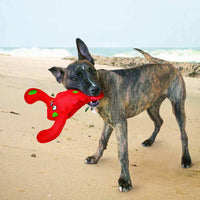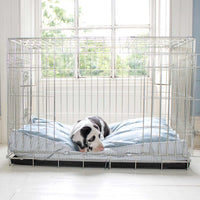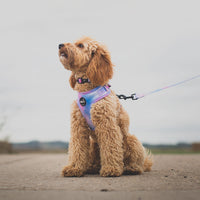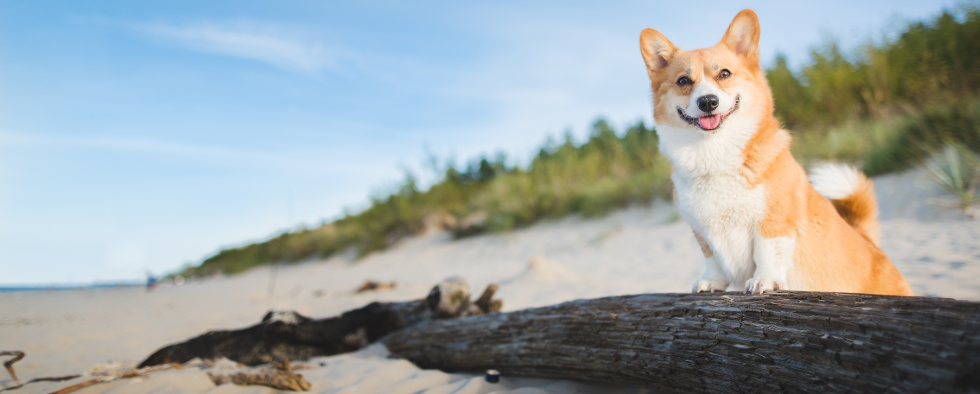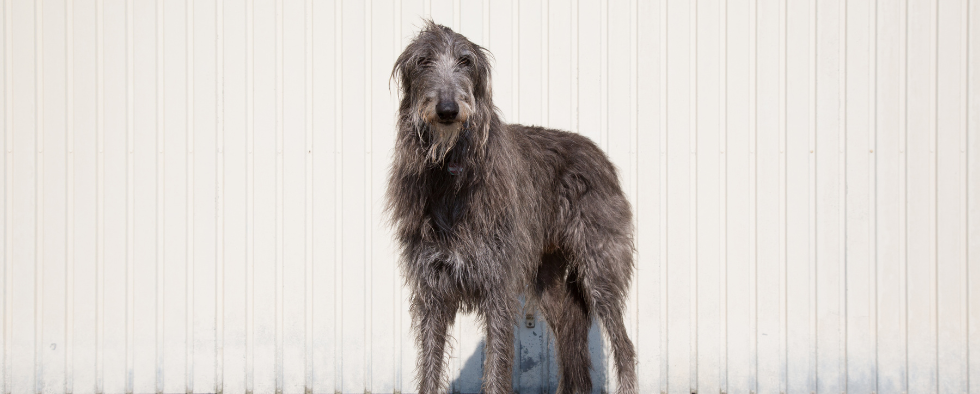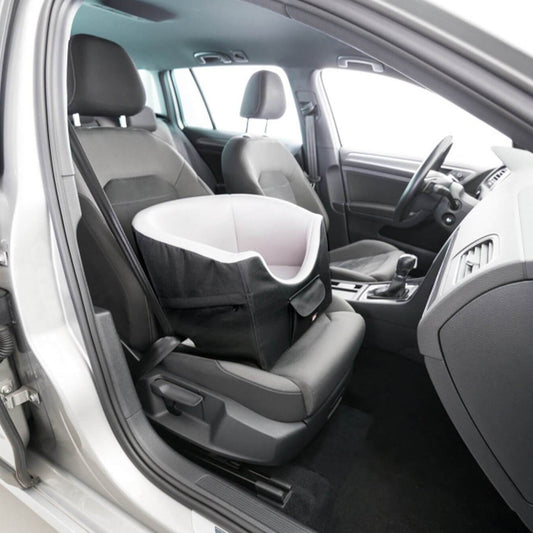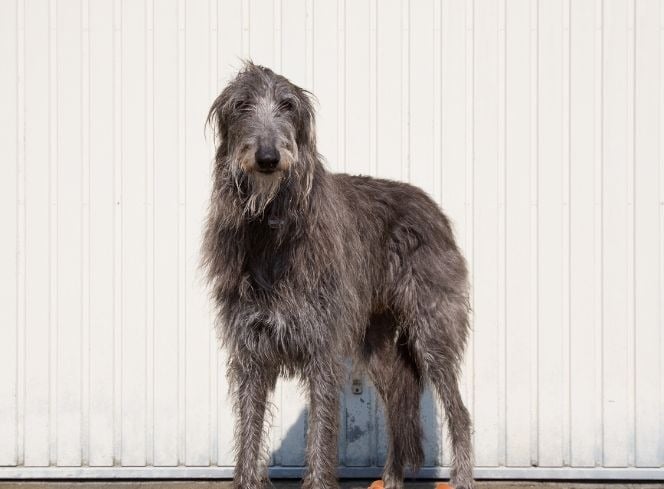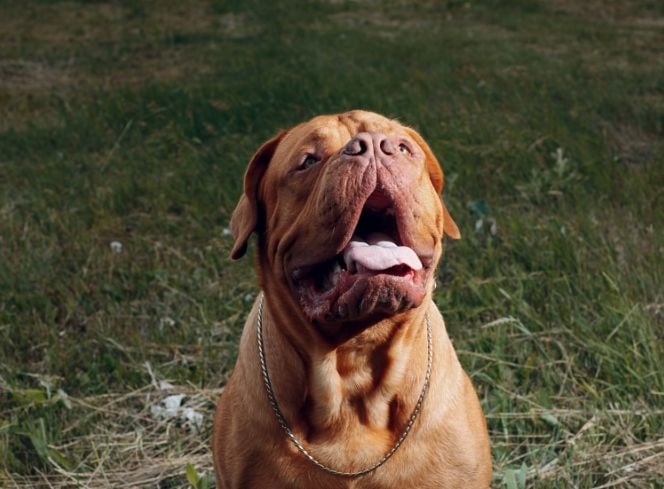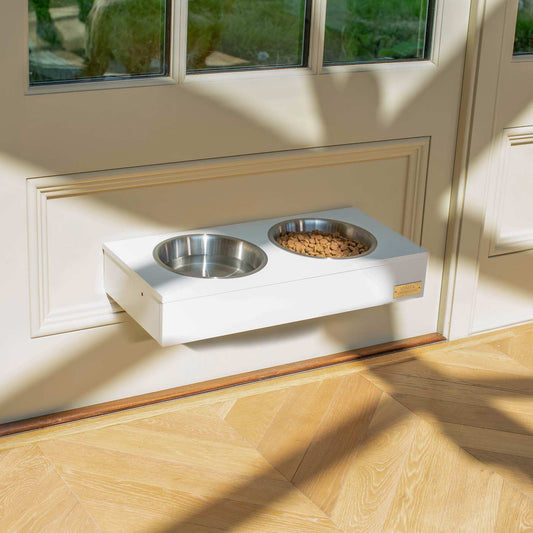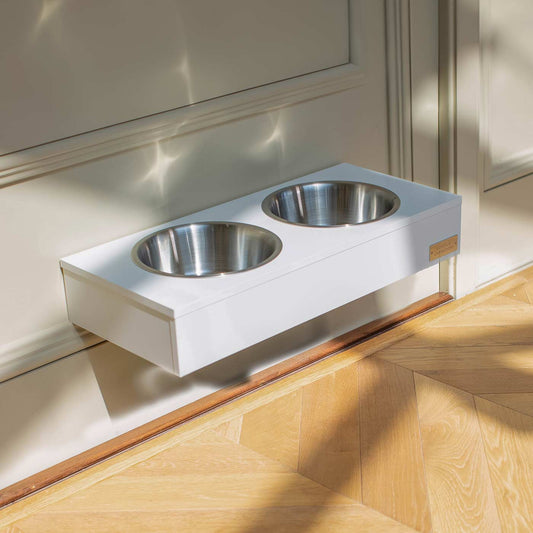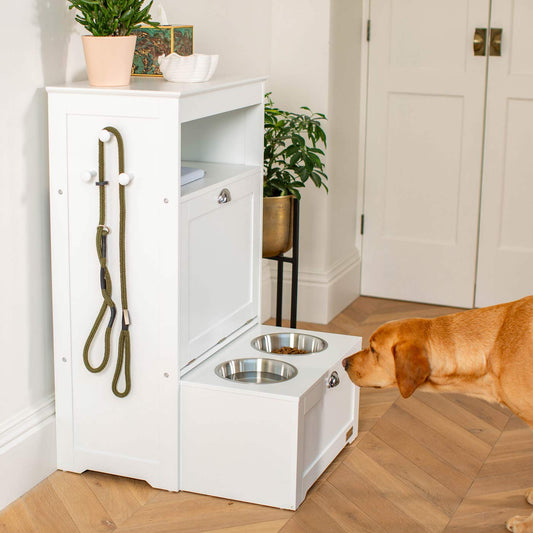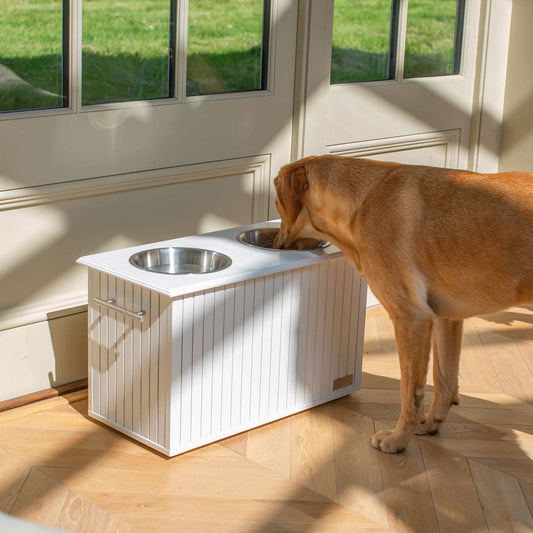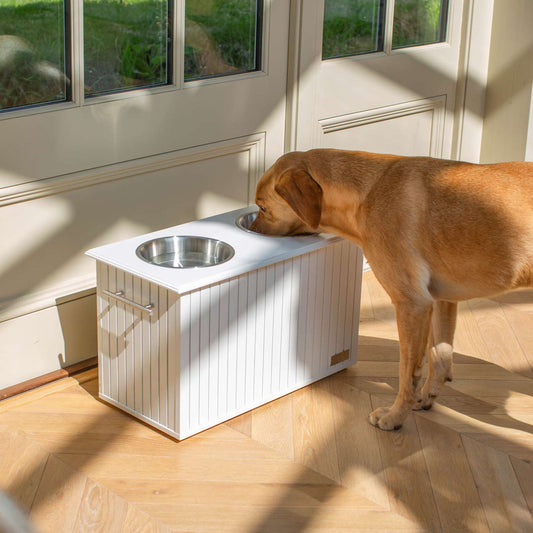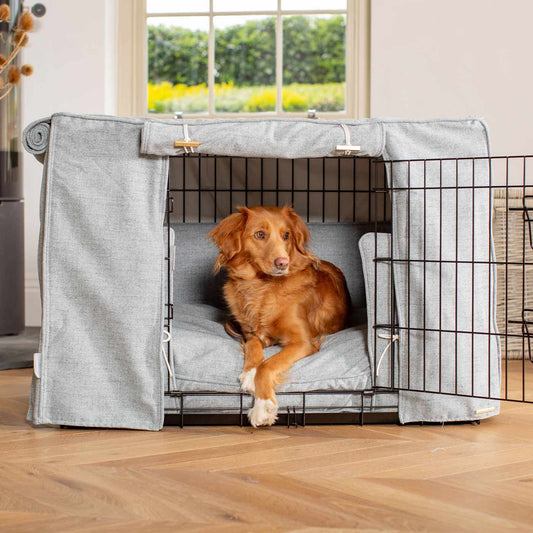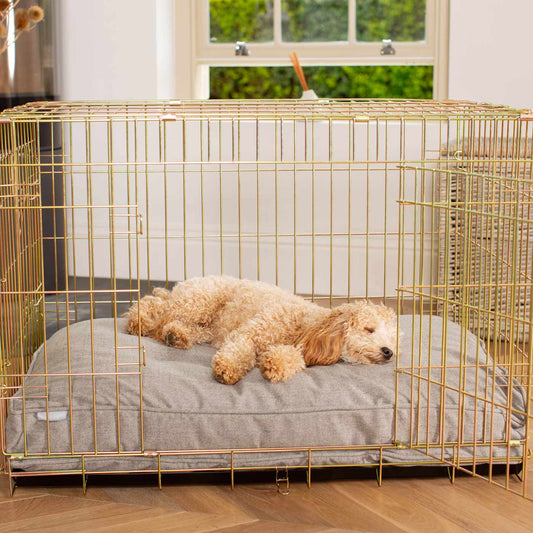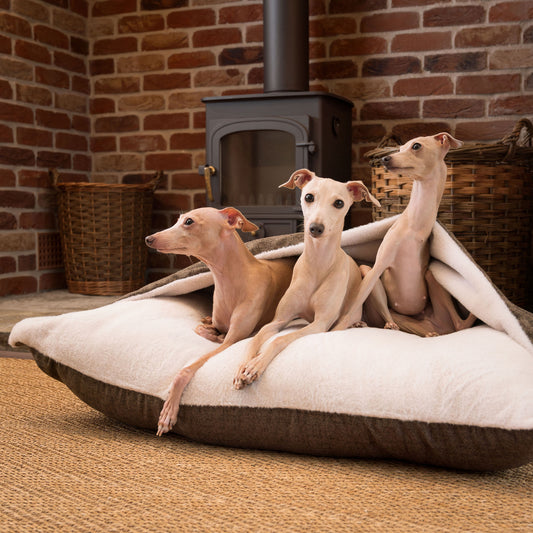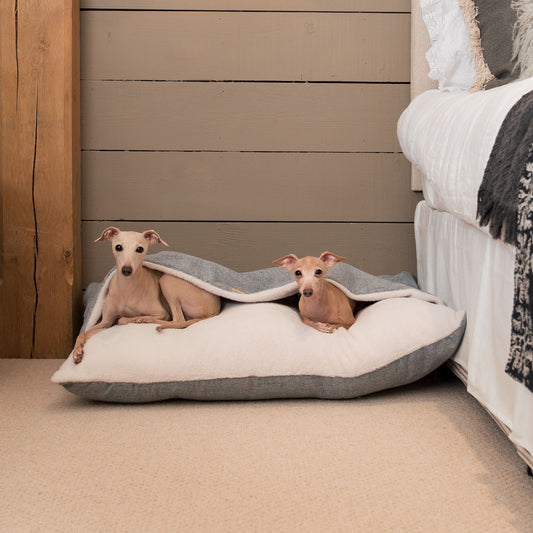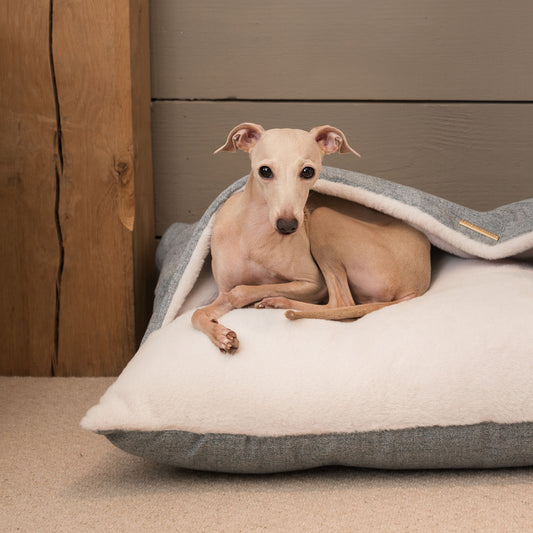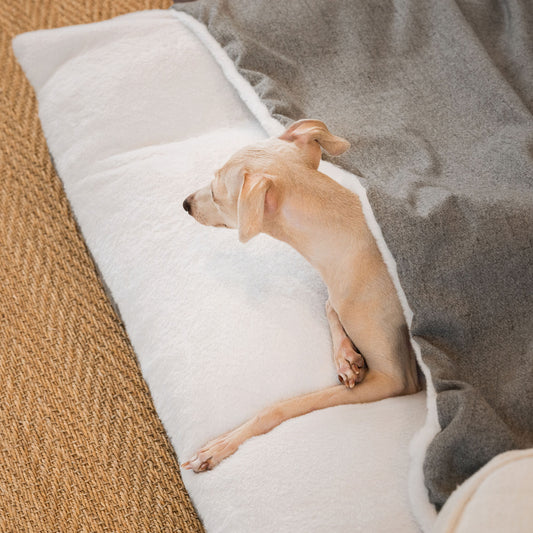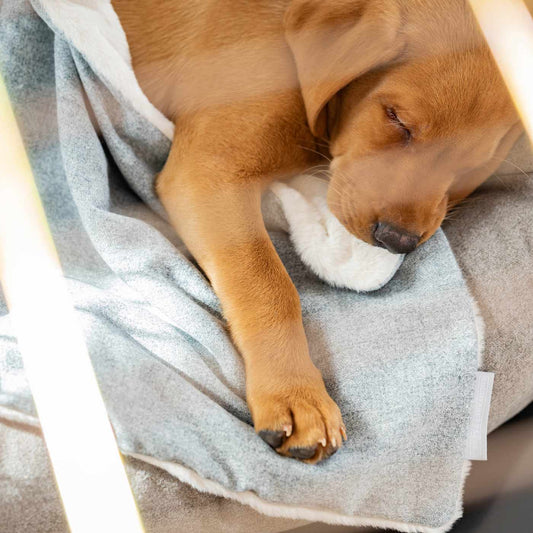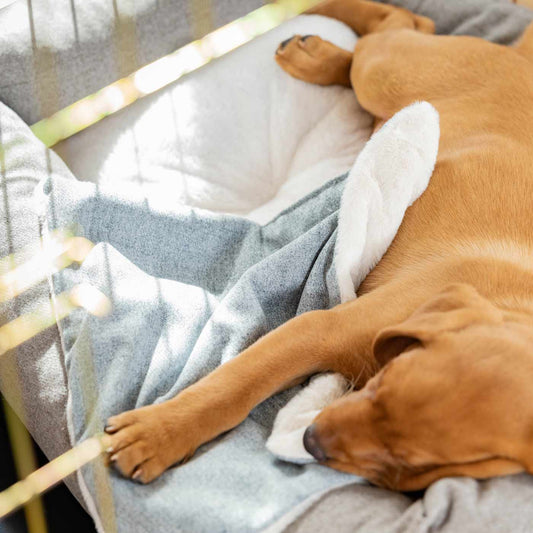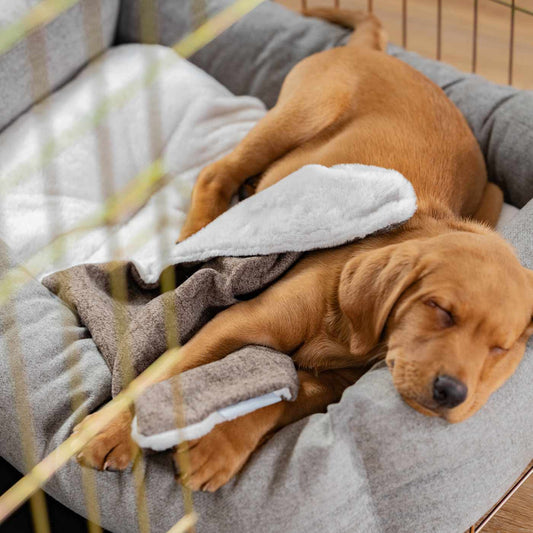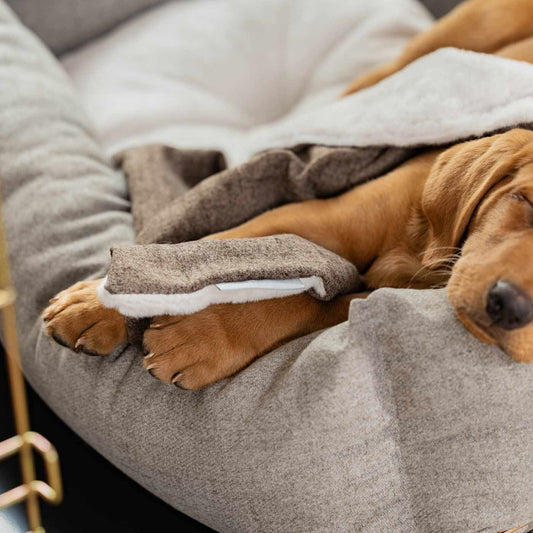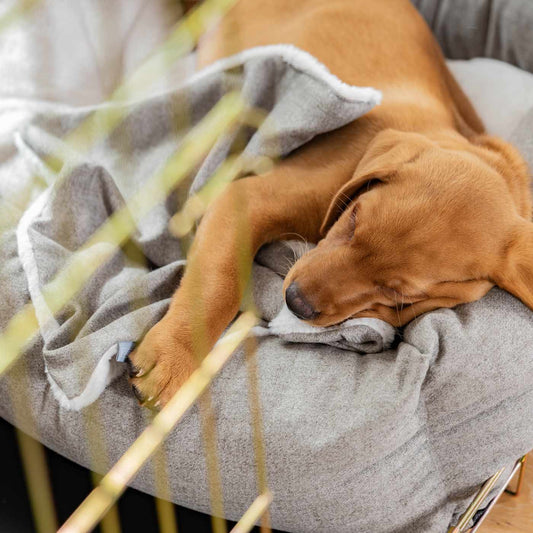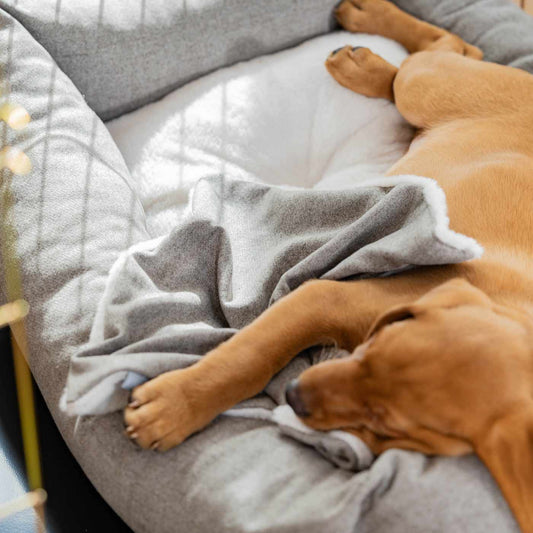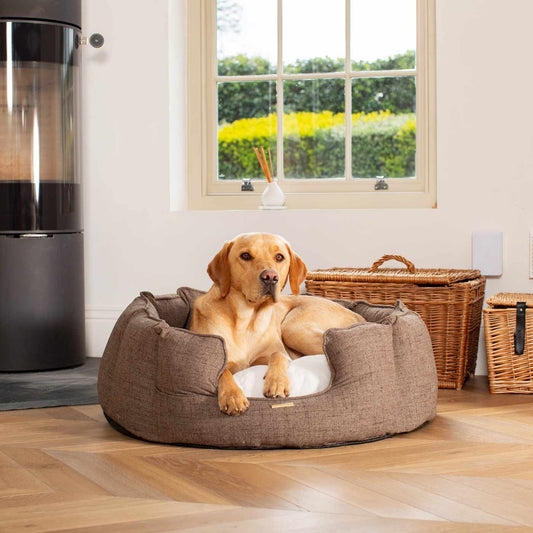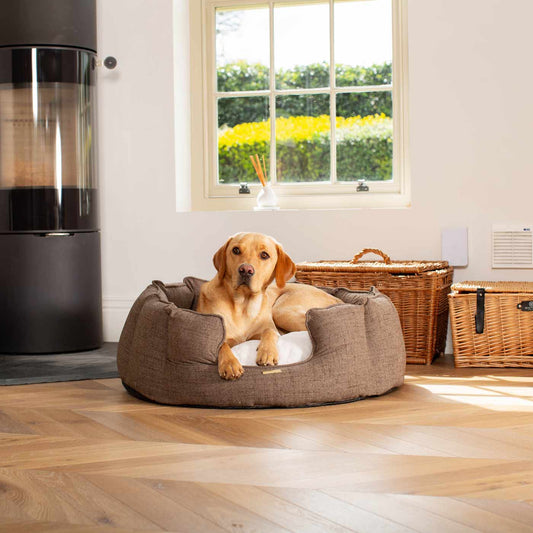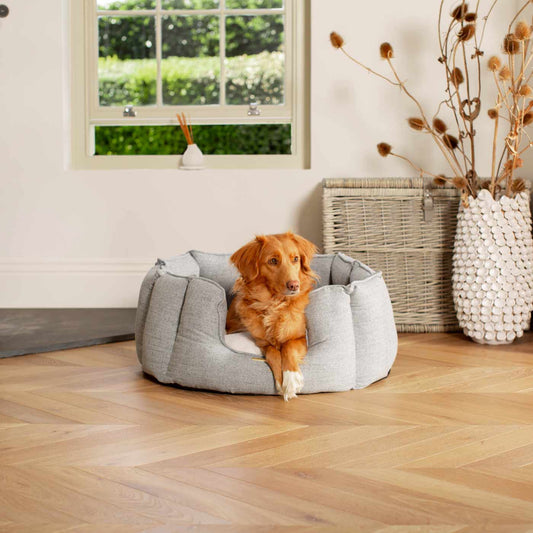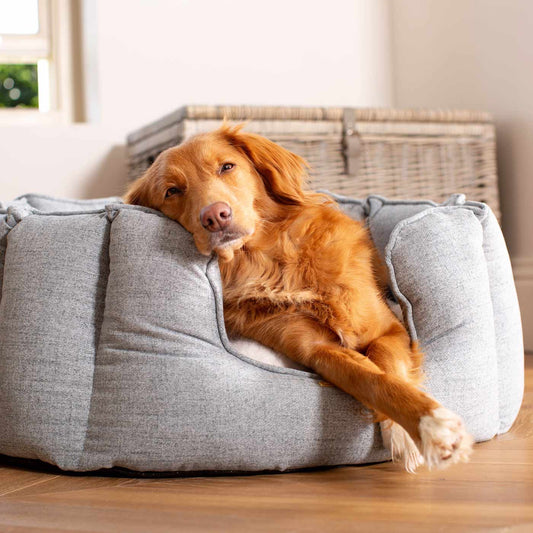Summer holiday season is fast approaching, and according to a recent study, 72% of Brits still prefer staycations in 2023, despite international travel having opened up again post-pandemic.
And when it comes to holidaying as a pet parent, staycations can be the paw-fect way to enjoy some much-needed R&R without having to leave your beloved dog behind.
Luckily, the UK has plenty of gorgeous locations on offer, ideal for hosting a well-deserved break for you and your dog. Naturally, for those holidaying on home soil with a pooch, ensuring your destination of choice has plenty to keep both you and your pup happy and entertained is key. Nobody likes a ‘ruff deal’!
With this in mind, we quizzed 2,000 UK dog owners about their thoughts on booking a holiday abroad if it meant leaving their four-legged friend behind, as well as asking them to share their top staycation choices and must haves for when they’re booking a dog friendly getaway.
Using our findings, we then compared key data points relating to holidaying with a dog for the top 45 locations (that had come from the survey) and awarded a number of points for each in order to inform our list of the UK’s best locations for a dog friendly getaway.
Read on to learn more...
That Guilty Feeling

According to our findings, one in eight (13%) UK dog owners say they never holiday abroad because they feel guilty leaving their four-legged friend behind, instead opting for staycations here at home. And one in nine (11%) told us they actually choose to take their pet abroad with them when they go!
For almost half, whilst they admit it bothers them to leave their pooch behind, leaving them with family and friends gives them peace of mind to enjoy a holiday outside of the UK from time to time.
Interestingly, almost ten percent of dog owners we surveyed (8%) told us they never opt take a staycation with their dog.
Regionally, it was Birmingham residents discovered to be feeling the guiltiest when it comes to leaving their doggo behind when jetting off on their jollies, as more than a quarter of residents (28%) say they never holiday away from UK soil as they simply cannot leave their pet behind. In stark contrast, just seven percent of Leeds residents would do agree.
Women were found to be the most likely to forgo an international getaway due to the guilt they felt about leaving their dog behind, with one in six saying they never holiday abroad for this reason (16%), compared to just one in nine men (11%).
A fifth of male dog owner (21%) even stated that leaving their pet behind whilst they get in some air miles does not bother them at all and they can do so guilt free.
The Price of True Love: Just How Much are UK Dog Owners Willing to Pay for a Dog Friendly Staycation?

When we quizzed our panel of dog lovers about how much they’d be willing to spend to bring their four-legged friend away with them on a UK staycation, we learned that UK dog owners are willing to fork out an extra £50 per night on average to take their furry friend along with them on their UK staycation.
On this basis, with 11 million dogs living in the UK alone in 2023, if each pooch enjoyed a single night away each year, it would mean an additional £550million for the UK travel industry
According to our findings, Londoners are the biggest spenders on this front with residents in the capital sharing that they’d be willing to pay £65.41 per night on average in order to treat their pet to join them in some R&R.
The average additional cost per night dog owners in the city would splash out for their dog to join them on their UK staycation
|
UK City |
Avg. £ (GBP) per night |
|
London |
£65.21 |
|
Newcastle |
£60.00 |
|
Belfast |
£56.30 |
|
Manchester |
£55.17 |
|
Liverpool |
£51.53 |
|
Bristol |
£51.09 |
|
Birmingham |
£45.53 |
|
Southampton |
£37.33 |
|
Leeds |
£37.15 |
|
Nottingham |
£36.36 |
|
Cardiff |
£35.09 |
|
Glasgow |
£33.17 |
|
Norwich |
£31.60 |
|
Sheffield |
£28.68 |
|
Edinburgh |
£18.50 |
Meanwhile, Edinburgh dog owners would pay the least (£18.50 per night on average), splashing out a substantial £46.91 less per night than those in the UK’s capital.
Those aged between 25 and 34 were revealed to be the most generous when it came to their dogs, saying they’d be willing to splash out a whopping £73.17 on average per night so their pet could come along on their UK getaway.
In comparison, those over 65 say they’d spend they least (£19.29).
How Much are UK Dog Owners Willing to Pay for a Dog Friendly Staycation

Next, we asked the survey panel to share their favourite dog-friendly holiday locations, with Newquay in Cornwall claiming top spot amongst UK dog owners. Other popular locations included Whitby, York, Windermere, and London.
Whilst at the bottom of the list, Douglas on the Isle of Man was found to be the least in favour with UK dog owners. Alongside Douglas, Derby, Reading, Southwold, and Nottingham all found themselves amongst the least favoured within the rankings.
What do Brits Want the Most from a Dog Friendly Staycation?

We also asked our 2,000 dog owners to share their top considerations when booking a dog friendly staycation, with plenty of places to walk their pup coming out at the top of the list (42%).
Other staycation “musts” included having dog friendly pubs in the local area (36%), plenty of dog friendly accommodation to pick from (35%), and of course, a good range of dog friendly restaurants and cafes (35%).
UK Dog Owners Top Considerations When Booking a Dog-Friendly Staycation
- Places to go walking - 42%
- Dog friendly pubs - 36%
- Dog friendly accommodation -35%
- Dog friendly restaurants/cafes - 26%
- A dog friendly garden in your accommodation -15%
- A vets close by - 13%
- Dog friendly beaches nearby - 12%
- Dog friendly shops (non-dog/pet shops) - 12%
- Dog friendly transport - 10%
- Relaxing Surroundings – 7%
The UK’s Best Locations for a Dog Friendly Getaway, Revealed
Finally, we compiled and compared key data points relating to holidaying with a dog in 45 UK locations, all of which were informed by our pet owner survey.
Points were then awarded based on the highest number of local walking routes, dog friendly pubs, hotels and other accommodation, vets in the area, pet shops, and of course the average weather.
So, who came out as top dog? We reveal all...
1. Bath, Somerset

Overall, Bath was crowned the UK's top location for a dog friendly getaway in our rankings, scoring 72 points out of a possible 100.
Despite missing out on a place in the top 20 locations for a dog friendly holiday in our initial survey findings, the city secured the number one spot in our rankings thanks to its 56 dog friendly pubs within a 10-mile radius (0.56 per 1,000 residents), 20 B&Bs and hotels in the area, and an average of 18.8 dry days per month between June and September.
Bath also scored highly for dog friendly aspects such as having 12 RCVS vets in the local area (0.13 per 1,000 residents), and 40 dog friendly pubs within a 10-mile radius (0.43 per 1,000 residents).
2. Lincoln

Although it was found to be the top choice for a dog-friendly staycation by UK dog owners according to our survey, Newquay in Cornwall placed at number nine in the rankings.
Lincoln scored just half a point behind leading city, Bath with 71.5/100, and those visiting the cathedral city in search of a dog-friendly getaway can take advantage of its 121 local walking routes (1.10 per 1,000 residents), 103 dog-friendly cottages and self-catering options, as well as an average temperature across June to August of 21 degrees Celsius.
Additionally, Lincoln boasts 18.6 dry days per month on average across June to August, and 22 dog-friendly restaurants (0.22 per 1,000 residents).
3. Whitby, North Yorkshire

The North Yorkshire seaside town of Whitby is up next, placing at number three on our list of the UK’s top holiday locations for a dog-friendly staycation (71/100).
Tourists considering a trip to the beautiful seaside town of Whitby in the coming months with their pup in tow can enjoy 100 local walking routes (7.94 per 1,000 residents), 52 dog friendly pubs within a 10-mile radius (1 per 1,000 residents), 35 pet shops (0.67 per 1,000 residents), and an average temperature across June to August of 20.3 degrees Celsius – not forgetting fish, chips and plenty of ice cream too!
4. Bakewell, Peak District

In fourth place is the pretty Peak District town of Bakewell, which scored 70.5 points out of a possible 100.
Dogs and their owners visiting the beautiful market town for a dog friendly staycation this summer will be greeted by a very generous 325 local walking routes (92.88 per 1,000 residents), 45 dog-friendly pubs (12.86 per 1,000 residents), and 20 RCVS vets in the local area (5.72 per 1,000 residents), and five pet shops within a 10-mile radius of the town (1.43 per 1,000 residents).
5. Southwold, Suffolk

Number five is on the list is another pretty seaside town, Southwold, which is located a little further down the UK coastline in Suffolk.
Scoring 70 out of a possible 100, alongside easy access to the beach, visitors to the coastal Suffolk town of Southwold will find eight dog friendly restaurants (8.42 per 1,000 residents), four pet shops (4.21 per 1,000 residents), an average of 18.6 dry days per month between June and September, as well as an average daytime temperature of 21 degrees Celsius across the same three-month period.
The Full List of Rankings
|
Rank |
Location |
Score (out of 100) |
|
1 |
Bath, Somerset |
72 |
|
2 |
Lincoln |
71.5 |
|
3 |
Whitby, North Yorkshire |
71 |
|
4 |
Bakewell, Peak District |
70.5 |
|
5 |
Southwold, Suffolk |
70 |
|
6 |
Oxford |
69.5 |
|
7 |
Skegness, Lincolnshire |
69 |
|
8 |
Keswick, Cumbria |
67 |
|
9 |
Newquay, Cornwall |
66.5 |
|
10 |
Sandown, Isle of Wight |
66 |
|
11 |
Helmsley, North Yorkshire Moors |
64.5 |
|
12 |
Stratford Upon Avon, Warwickshire |
64 |
|
13 |
Salisbury, Wiltshire |
62.5 |
|
14 |
Torquay, Devon |
62 |
|
15 |
Cheltenham, Gloucestershire |
61.5 |
|
16 |
Derby |
61 |
|
17 |
Windermere, Cumbria |
58 |
|
18 |
Eastbourne, Sussex |
55 |
|
19 |
Bamburgh, Northumbria |
54.5 |
|
20 |
Inverness, Highlands |
54 |
|
21 |
Norwich, Norfolk |
54 |
|
21 |
Norwich, Norfolk |
53.5 |
|
22 |
Ilkley, Yorkshire Dales |
53 |
|
23 |
York |
52.5 |
|
24 |
Melrose, Scottish Borders |
52 |
|
25 |
Great Yarmouth, The Norfolk Broads |
50.1 |
|
26 |
Brighton |
50 |
|
27 |
Dover, Kent |
48 |
|
28 |
Bristol |
45 |
|
29 |
Blackpool |
44.5 |
|
30 |
Douglas, Isle of Man |
44 |
|
31 |
London |
43.5 |
|
32 |
Nottingham |
43 |
|
33 |
Reading, Berkshire |
41 |
|
34 |
Bournemouth, Dorset |
41.5 |
|
35 |
Plymouth, Devon |
41 |
|
36 |
Edinburgh |
40 |
|
37 |
Swansea, Wales |
39 |
|
38 |
Cardiff, Wales |
38 |
|
39 |
Southend on Sea, Essex |
36 |
|
40 |
Newcastle Upon Tyne |
33.5 |
|
41 |
Lancaster |
33 |
|
42 |
Birmingham |
26.5 |
|
43 |
Liverpool |
26 |
|
44 |
Glasgow |
20 |
|
45 |
Belfast |
14 |
The Lowest Scoring UK Escapes

At the very bottom of the dog-friendly holiday rankings was Belfast securing an overall score of just 14 out of 405.
Sadly, despite being a popular tourist destination, the Northern Irish city received a low score and placed last on our list of rankings due to having just 14 dog friendly pubs within 10 miles of the city (0.02 per 1,000 residents), six dog friendly hotels and B&Bs, two dog friendly self-catering options, and an average of 13.4 dry days per month between June and August.
Other locations that placed at the bottom end of the list, included Glasgow (20/100), Liverpool (26/100), Birmingham (26.5/100) and Lancaster (33/100).
Top Tips for Holidaying with Your Dog

With our findings in mind, we thought we would share some of our top tips for holidaying with a dog....
Traveling to and Around your Destination with a Dog
Whether you opt to reach your staycation venue by train, car, or bus, traveling with a dog can take a bit of careful pre-preparation and planning.
For example, if your dog is not used to traveling by vehicle, it’s advisable to get in some practise runs locally, before you head off on a longer journey. This will give your pet plenty of time to get used to the new smells, sounds and general surroundings, as well as familiarising them with the unusual sensation of being inside a moving vehicle.
If you’re traveling to your destination by car specifically, then it’s worth noting that in the UK (and in many other countries) it is a legal requirement to secure your dog whilst driving, this is for your own safety as well as theirs.
The Highway Code states in their Rules about Animals, that when in a vehicle, dogs must be suitably restrained so they cannot distract drivers or injure you, or themselves. If you find they have managed to get loose in the vehicle, then you must find a safe place to pull over and stop the car quickly.
As such, there are a number of ways in which you can ensure your dog is safely secured and still comfortable, especially if you have a lengthy drive ahead of you.

If you have the space, then for smaller dogs especially, it’s often preferable to have them inside the main car space alongside the rest of the family. In this instance, you may find a doggy booster seat to be the best solution for your pet as it allows them to ride safely up front, giving them the opportunity to see what’s going on outside of the car, whilst still being secured via a harness attachment. This option is better suited to smaller breeds.
For larger breeds, you could opt for a tether. This clever attachment fixes to ISO fix point or to your seatbelt and means you can safely attach it to your pet's travel harness, meaning they cannot wander around your vehicle freely whilst in motion.

Alternatively, you may decide that a travel crate or carrier in the boot of the vehicle is a more suitable option as it gives you back that valuable space in the main body of your car. If you do choose this method of securing your pet, you can make sure they feel safe and comfortable by adding in their favourite bed or pet blanket to help make the crate a little more comfortable for their journey.
Finally, make sure you plan in plenty of stops along the way. This will allow your pet to stretch their legs, have a drink of water or a small snack, as well as getting in those much-needed toilet breaks, and give you chance to praise and reassure them.
What to Pack?
Much like with humans, dogs tend to come with a rather large number of travel essentials. When packing for a holiday with your pooch, we’d recommend considering the following items, even for a shorter getaway:
• Bedding and blankets
• A few of their favourite toys
• Food and snacks
• Doggy bowls
• Plenty of poo bags
• Any medication they might be on
• A doggy first aid kit
• Harnesses, collars, and leads
• Any wet weather gear they may need (onesies, coats, etc.)
• Spare towels you don’t mind the dog using
• Doggy shampoo + pet wipes
• Details of local vets – just in case!
• A rucksack or bag to pop the essentials in for when you’re out and about.
Conclusion
It’s great to see so many dog owners enjoying all the UK has to offer, there really is an abundance of choice when it comes to getting out and about and exploring the beautiful country we live in.
We hope our study has highlighted some of the beautiful destinations on home soil that are there to explore. And dog or no dog, we truly believe there is something for everyone just a stone's throw away from home.
Whether you prefer a city break, a countryside jaunt with a good dog friendly pub at the end, or even a coastal break, wherever your travels take you to this summer, we hope you and your pet enjoy your adventures!
Our Study Sources and Methodology
- Survey of 2,000 UK dog owners conducted in June 2023
Population Data - https://worldpopulationreview.com/ and https://www.citypopulation.de/en/uk - of local 'Walking Routes' per 1,000 residents - https://www.plotaroute.com/routes/walking
- of 'Dog Friendly Pubs' per 1,000 residents - https://www.dogfriendly.co.uk/ and https://www.useyourlocal.com/
- of 'Dog-Friendly Hotels & B&Bs' - https://www.dogfriendly.co.uk/hotels-b-and-b
- of 'Dog-Friendly Cottages & Self Catering' - https://www.dogfriendly.co.uk/cottages-and-self-catering
- of 'Dog Friendly Restaurants' Listed on TripAdvisor, per 1,000 residents - https://www.tripadvisor.co.uk/ - limited searches to specific places and not surrounding areas
- of RCVS Vets in Local Area per 1,000 residents - https://findavet.rcvs.org.uk/home/
- of 'Pet Shops' (within 10 miles of location) per 1,000 residents - https://www.yell.com/ and For Douglas: Google Listings
- Dry Days June - Aug - https://www.meteoblue.com/en/weather
- Temp Days June - Aug - https://www.meteoblue.com/en/weather

